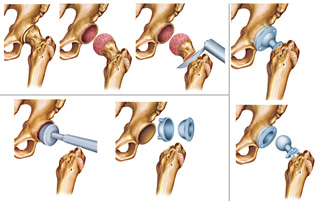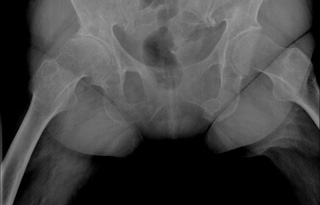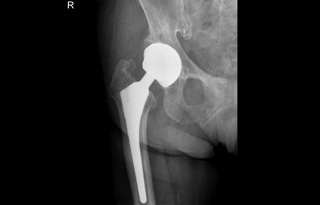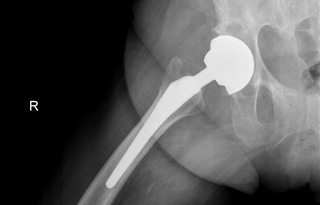Hip arhrosis is becoming a common disease and it varies depending on the geographic area between the 10% and 25% of the population.
Aetiology
- Idiopathic.
- Secondary. Causes:
- Trauma.
- Congenital anomaly.
- Osteonecrosis.
- Septic.
- Other diseases (Legg-Calvé-Perthes disease, epiphysiolysis, congenital hip dysplasia)
Clinic (Symptoms)
Inguinal pain and wandering that can radiate to the anterolateral side of the thigh with limited range of movement that prevents the patient to do daily activities such as going up and down stairs, putting on shoes, etc.
Diagnosis
Your surgeon will gather information about your health and your hip by means of your clinical history, physical examination, X-rays and MRI (magnetic resonance imaging).
Treatment
Our first option is a conservative treatment by means of:
- Antiinflamatory medicines and relative rest.
- Using a cane to relieve weight
- weight loss.
Surgical treatment (arthroplasty) is performed after other therapies have failed.
Techniques
- Partial hip arthroplasty- It is not very common in patients with coxarthrosis. The procedure is recommended only for elderly patients (more than 75 years old) with femoral head fracture and low activity level.
- Hip resurfacing.
Contraindications:
- Bone cyst on the femoral head.
- Osteoporosis on the femoral neck (upper thighbone).
- Pregnancy.
3. Total hip replacement – It consists of a total joint replacement with possible cementation depending on the bone quality of the patient. The most frequent friction torque used is ceramic-to-ceramic because of the low wear rate of these materials.
Complications (Risks):
- Loosening.
- Infection.
- Bleeding
After surgery the patient will stay in hospital for several days for the pain management. He/she will be taught some rehabilitation exercises and postural measures. The patient will be able to walk with crutches after the second day of the surgery, leaning the weight of his/her body on the operated leg. It begins the recovery process by means of active and passive exercises under the strictest medical supervision and physiotherapist training.
Hip replacement surgery results of these new kind of implants are excellent over time regarding to the clinical improvement.Very few patients need a checking surgery because of loosening or wearing out of parts.













